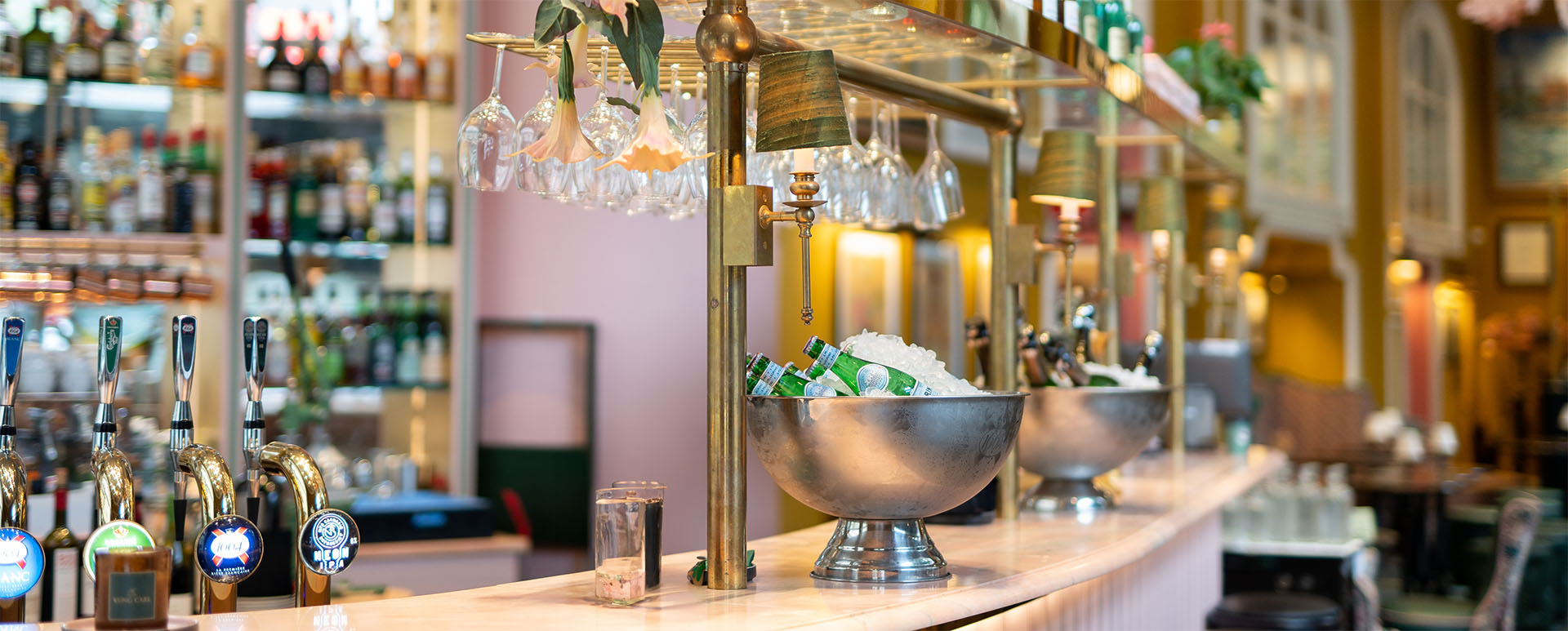Restaurants are now facing significant challenges due to food inflation.
Naturally, any price adjustments should be part of an overall menu pricing strategy and not just random changes, but we also want to shine a light on the subject. Below are several creative suggestions on how to think about pricing and margins!
Boost margins while benefitting from selling less
The ability of a restaurant to manage periods of raising prices seems to depend on successfully capitalizing on the trade down — offering substantial value while still delivering excellent experiences – to the right price will be the key.
Below are some strategies to capture trade downs without compromising margins:
1. Identify your restaurant's place in the local market
Analyze how your restaurant's pricing compares to other similar establishments in your area. If you notice that your prices are already generally lower, it means you're well-positioned for consumers seeking lower-cost options. However, there's always room for further improvement, especially given potential economic instability. On the other hand, if your prices are generally higher compared to your competitors, consider incorporating some value-oriented choices among your menu items.
2. Brainstorm ways to cater to lower price points
Contrary to what might seem logical during a period of rising food costs, consider ways to offer lower price points, not by decreasing existing prices, but by introducing new, cost-effective items like snacks or “Todays drink” that are cheaper than other drinks but has a high margin. This is where menu engineering and recipe costing can prove invaluable, enabling you to find the perfect balance between cost, pricing, and profitability.
Understanding the cost of an ingredient
Recipe costing tools can help you understand the cost of each recipe ingredient, allowing you to streamline your menu and reduce the variety of ingredients needed, ultimately lowering your inventory costs. Read more about how to calculate food costs.
3. Reevaluate your promotions and limited-time offers (LTOs) across all channels
Consider the implications if your customers only order discounted items and skip the regular-priced items. In this scenario, you'll need to ensure your promotional items can still generate adequate profit margins. This might mean offering smaller portion sizes, reducing the amount of the discount, or creating combination deals that pair high-profit and low-profit items to maintain overall profitability.
Attractively priced special item
Encourage your team to think outside the box during this period. LTOs don't necessarily have to involve discounts. Instead, try introducing an attractively priced special item available once a week, utilizing its exclusivity rather than discounts to boost sales. Read about How to get loyal guests.
4. Use technology to enhance profitability
New business areas like delivery and online ordering can be new ways, but also think about using what you already have. Today's POS systems collect statistics and data and can show real-time sales and provide end-of-day reports that show margins on specific sales. Take advantage of what you see and rethink your menu. The right technology allows you to use the staff you have (in times of staff shortages) by improving your personal service, perhaps implementing QR codes that offer self-service opportunities.
QR as a complement
QR codes allow the server to focus on the service, such as greeting and talking to guests and helping to suggest specific menu items or offers, instead of handling payments. At the same time, guests can freely order food and drinks without the hassle of waiting for service. Trivec offers Trivec Buddy for ordering and payment via QR codes. Trivec has also made it possible to integrate with Karma which is a QR solution with open billing or direct payment, however the guests want it.
Simultaneously, diners can freely order food and beverages without the hassle of waiting for service. By digitalizing more tedious aspects of restaurant management, the dining experience can be improved for both staff and customers.

5. Streamlining the payment process to save time
On average, mobile payments made directly at the table using a handheld POS can save time per table, compared to traditional payment methods. Interestingly guests tend to tip more on transactions made via a handheld order and mobile device with predefined tip percentages.
Enhancing counter service by empowering employees and providing more options for guest orders and checkouts. Read about HandyPay.
6. Manage all your restaurant expenses effectively
The initial step in managing your restaurant's expenses (including supply chain and food prices) involves regular tracking. It's crucial to consistently break down your ongoing restaurant costs for effective management.
A restaurant costs breakdown involves calculating and analyzing all the expenses related to the inception, operation, and optimization of a food business. This is usually divided into fixed and variable costs — with variable costs being the main area needing control. How to increase your restaurant profit margin.
7. Managing labor costs
Managing your labor costs begins by tracking all costs associated with your employees, including payroll, benefits, and taxes. Calculating labor costs isn't as straightforward as totaling the hours worked and multiplying them by wages. For instance, if you pay an employee X per hour, the actual cost to you, considering insurance and taxes, it will be much more. As food inflation pushes COGS higher, you can counteract this by being smarter about labor costs.
Offloading staff with the right technology
With the right technology, you can have fewer employees (in times of staff shortages) e.g. one person on the floor taking care of the guests, placing orders and taking payments (HandyPay). As a complement, you can have runners who go out with the orders. This also increases the service to guests who do not have to wait to order or pay.
Read more about Trivecs partner ecosystem of integrations.

 Svenska
Svenska Dansk
Dansk Norsk bokmål
Norsk bokmål Français
Français België – NL
België – NL